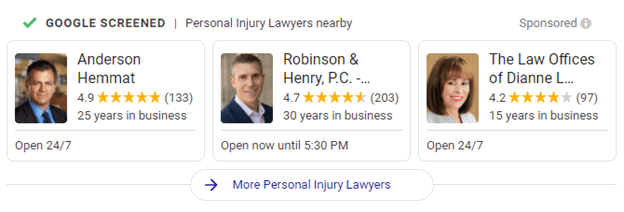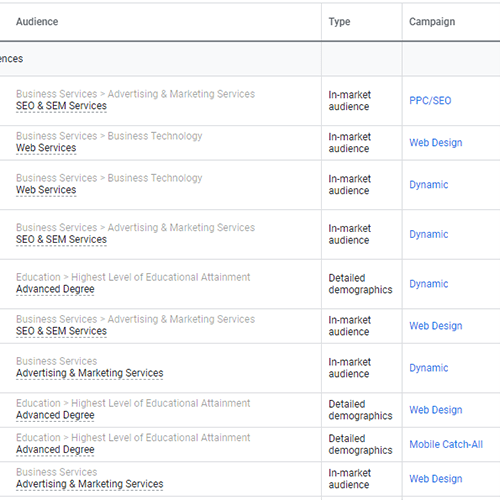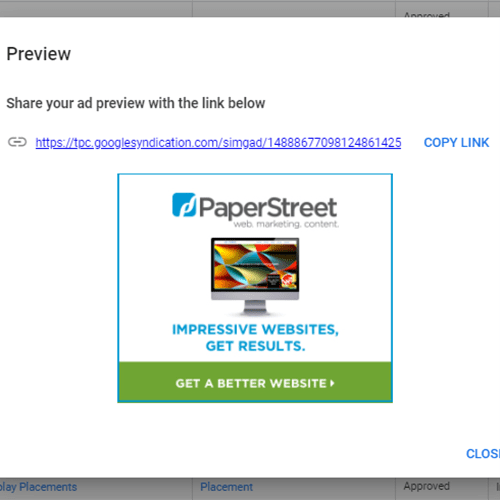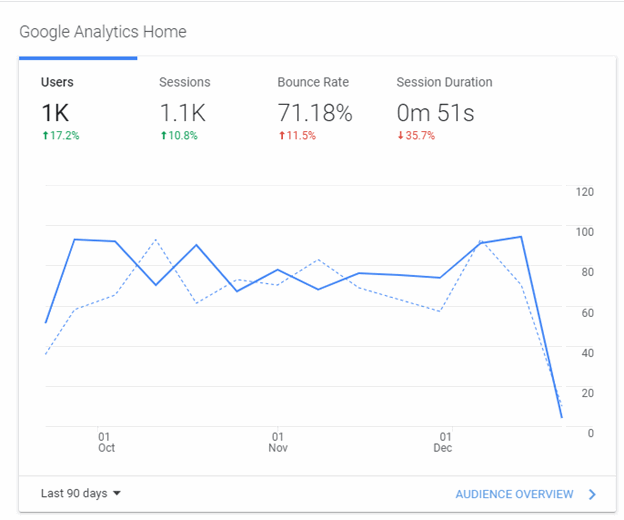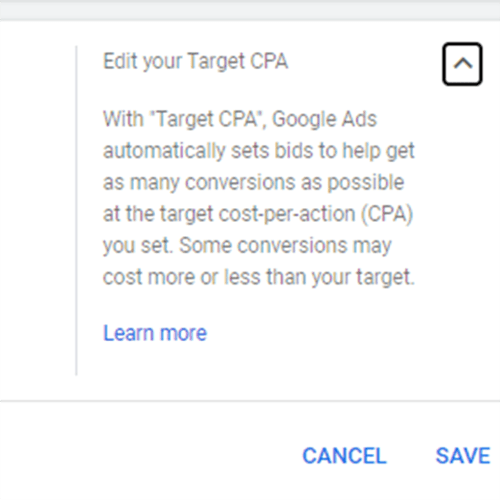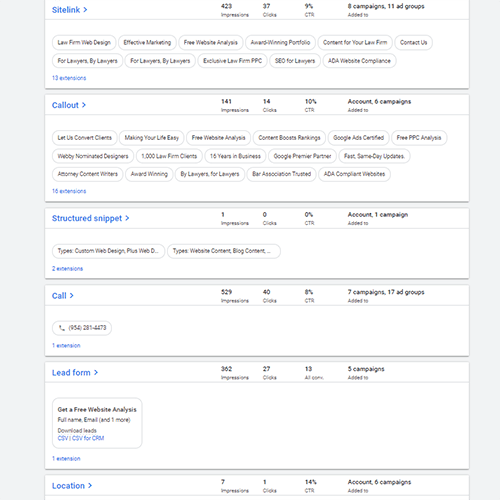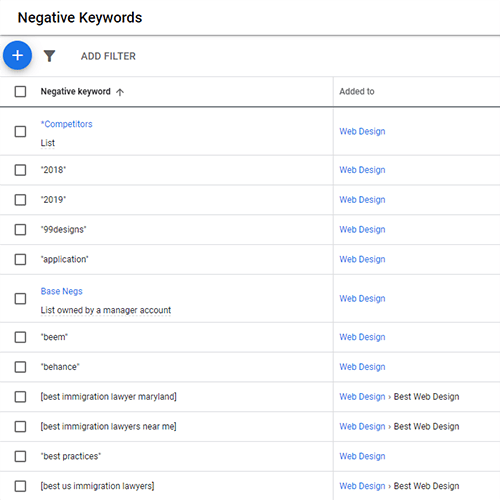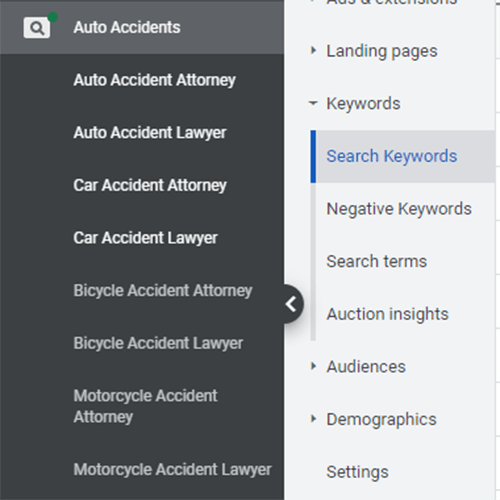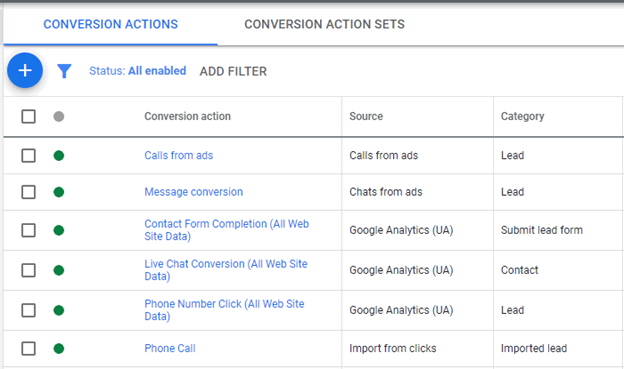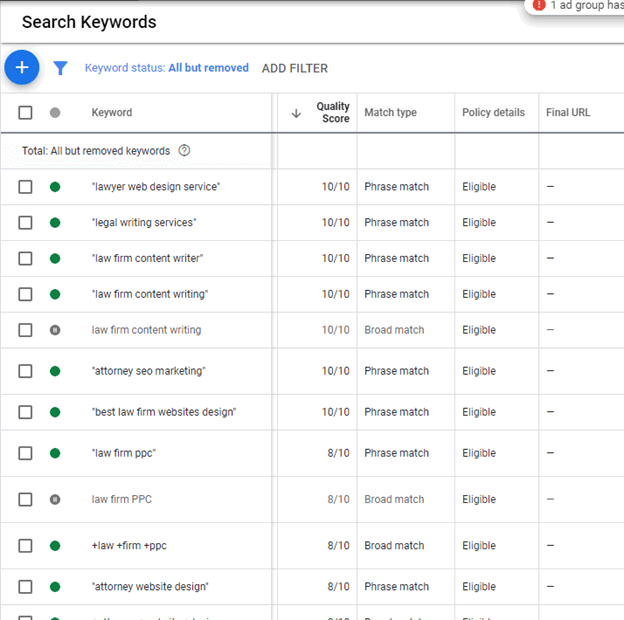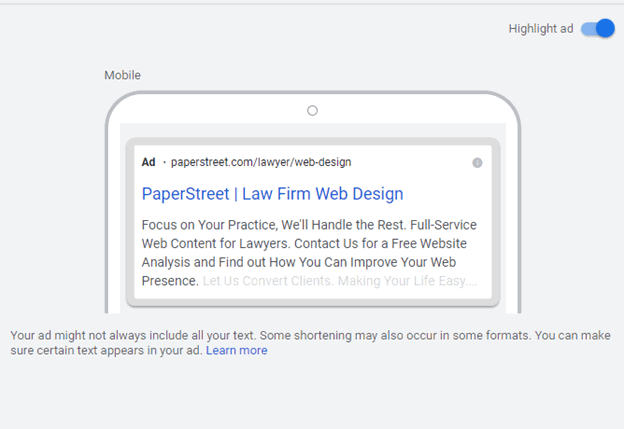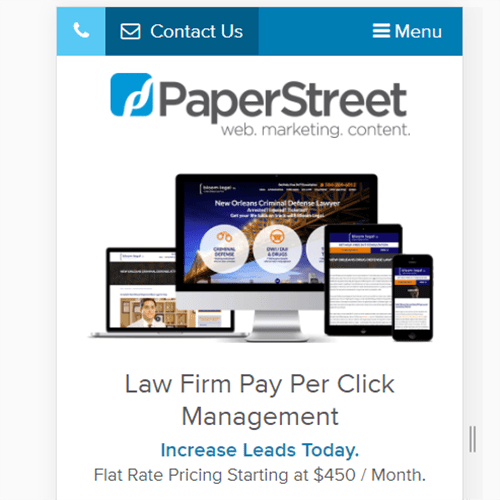- Responsive Ads.
Responsive ads use your copy and other properties (i.e. images and videos on display) to show the best combinations to users based on machine learning. This takes the guesswork out of testing ads and adds an element of versatility, particularly with display ads. Since June of 2022, Google only allows the creation and support of responsive ads for search, so getting on board with these ads is imperative for future success. Since it is no longer possible to edit previous text ads, it is important to include strong and clear messaging in the options for responsive ads. - Local Service Ads (Google Screened).
A newer offering from Google now serves nearly every location and legal practice area. These ads show your law firm at the top of Google searches, even above traditional Google Ads, and run on a pay-per-lead model rather than pay-per-click. Early adoption is important to get a foothold in your market before it becomes saturated. - Local Service Ads.
These are proven to assist, obtaining top tier local rankings for Paid. - Audience Targeting.
Audiences are the present and future of paid search. They allow advertisers to choose the right messaging and viewers for a given campaign or ad group, either by targeting groups you want to show your ads to or excluding groups that don’t fit your target audience. Continued innovations on audience creation and targeting may eventually make keywords obsolete. - Mobile is King.
The majority of clicks from paid searches come from mobile devices; so having ads and landing pages that appeal and target to mobile users is key. If your message or page functionality are not in line with user expectations, your business will suffer. - Display Campaigns.
Just a few years ago, display campaign strategies for lead generation were essentially "throw everything at the wall and see what sticks." With advancements in targeting, from audiences and topics to expanded demographics, display campaigns are now viable options for driving conversions. - Google Analytics Integration.
Google Analytics is not just for website analysis, it also offers insights into how paid search is performing. Additionally, Analytics is the preferred source of conversion tracking for Google Ads - Don't Be Afraid Of Automation.
Whether through the use of rules, scripts or platform-provided automated bidding strategies, automation can be helpful in freeing up time to focus on more important tasks. Most bidding strategies have at least some element of control, so risks are negligible as long as the correct strategies are chosen and campaigns are regularly monitored. - Platform Diversity.
While Google is the undisputed champion of paid search, that doesn't mean that other platforms don't have something to offer. Facebook, LinkedIn, Reddit, Microsoft Ads and Hulu, among others, each have a niche that they can serve (i.e. B2B on LinkedIn). Branch out from Google when the opportunity arises. - The Value of Bing.
By default, Android devices use Bing; historical data shows campaigns getting proportionately as much exposure, clicks, and conversions, yet at a fraction of the cost. - Proper Use And Testing Of Extensions.
The amount of space available for extensions on paid search ads is limited, so it is important to ensure you have the right extensions showing at the right times and on the right devices. It's also a good practice to test extensions beyond the default sitelink, callout, location and call extensions. You never know what might click with your audience (pun intended). - Monitoring Negatives.
Frequently check search term reports for possible additions to negatives, including competitor terms (if you don’t want those) and locations your business doesn’t service. Also check auction insights reports and do a Google search for potential competitor names to add to negatives. Robust negative lists can prevent unwanted searches. - Niche Your Keywords.
Some areas like criminal defense and personal injury can get extremely competitive in larger markets. If you don’t have a large budget, you may see more success by splitting these down into smaller focus areas like slip and fall and white collar. By niching your targeting, you commonly also see higher quality clicks, as your audience is searching for exactly what their case is about. - Proper Tracking is Key.
You don’t know how well your campaign is doing unless you set up a means to track every opportunity that someone may contact you through. Be sure that you have conversion methods set up for your contact forms, call extensions and phone calls from the website through a service like CallRail. Having this conversion data will also allow you to make adjustments to your campaigns in order to improve the quality and volume of conversions you receive. - A/B Testing.
Every area of law performs differently, and every city will have different results. You can’t expect the same campaign to work well in all areas. You should A/B test your ad copy, landing pages and keywords to build your campaigns specific to the audience you are targeting. - Quality Scores Matter.
Google assigns a quality score to every keyword that you target in your account. This number is based on how closely your ads match that keyword term, the landing page that your ads direct to and how closely they match the keyword, as well as user interaction with those ads. You want to build your campaigns in order to achieve a 6+ quality score. For every point above a 5, you will see lower cost bids and you will have an easier time achieving higher positioning. - Branding.
More and more, competitors are targeting the brand names of other firms to piggyback off of their marketing efforts. Creating a campaign based around your brand name can help drive them out of the ad space and ensure that potential clients find you first.

